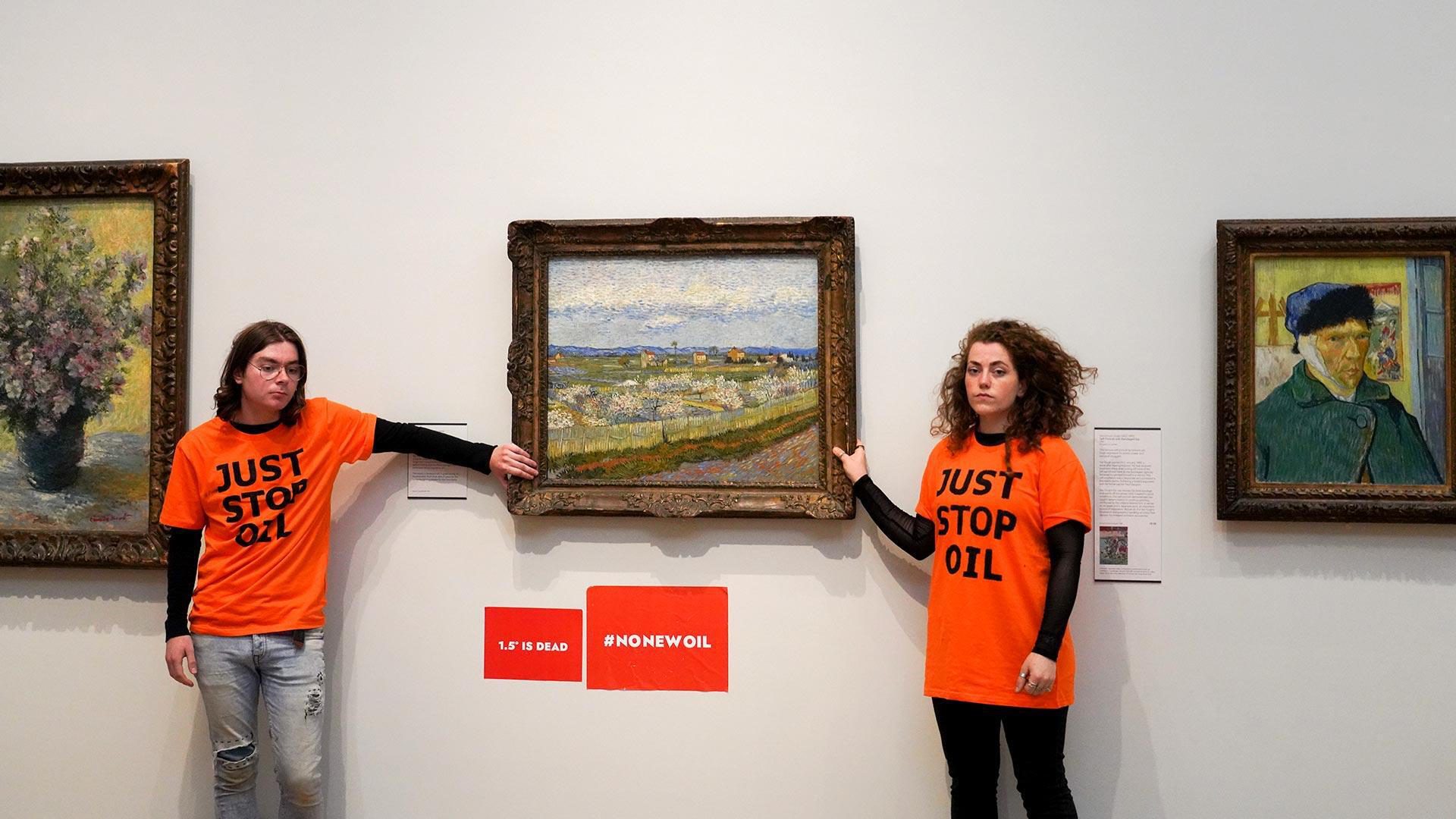- April 19, 2023
- By Annie Krakower
When sociology Professor Dana R. Fisher began studying what’s now known as the climate crisis over two decades ago, most Americans didn’t see what the big deal was; even supporting government investment in clean energy was what she describes as “nichey.”
Today, young activists are so passionate about stopping climate change that they spew soup at priceless paintings to get their points across.
That shift in attitudes and the attendant rise in activism have been key topics for Fisher in her research on climate policy. Through surveys and open-ended interviews with both policy elites and demonstrators, she’s gathered data on how climate issues—and how we react to them—have changed over time. That work will be synthesized in her upcoming book, “Saving Ourselves: From Climate Shocks to Climate Action,” expected to be available early next year from Columbia University Press.
“I bring in all of these data that I’ve collected since the 1990s to try to flesh out what it will take for us to get to a sufficient social response to the climate crisis,” she said.
Here are five takeaways from her research about how activism has evolved, what’s working and what’s next:
Increasing “climate shocks” have made young people unwilling to go slow.
Climate shocks, which Fisher defines as “deviations from normal environmental patterns in the form of drought, flood, heat wave or other extreme events that have been exacerbated by climate change,” are more frequent and severe in recent years. In summer 2021, nearly one in three Americans experienced one, according to The Washington Post.
That’s made activists, “particularly young people who are trying to think about what the future’s going to look like,” frustrated that we’re not doing enough, Fisher said.
“That is why we are seeing growing dissatisfaction with policymaking and incremental politics,” she said. “We’re seeing a growing number of people who are getting involved in climate activism and becoming more and more willing to engage in civil disobedience.”
That’s led to more confrontational tactics.
As activist groups turn away from more traditional lobbying or other mainstream political actions, their methods have become more disruptive—and, sometimes, messy.
Protesters last year threw food at famous paintings, like hurling tomato soup at Vincent Van Gogh’s “Sunflowers” (which remained safe behind a protective screen), glued themselves to museum walls and blocked beltway traffic. Fisher calls these performative tactics “disruption as shock.”
“There is no direct connection to reducing CO2 or greenhouse gas emissions,” she said. “The indirect pathway from the action is by getting general public attention through, in most cases, media attention. The attention hopefully mobilizes more outrage among the general population to pressure policymakers.”
Not up for a food fight? Disruption can be as easy as taking a seat.
Another form of protest that’s becoming more popular is “disruption as part of a repertoire of contention,” Fisher said, which aims to garner attention for a specific campaign that’s in progress.
Sit-ins by seniors at four of the largest U.S. banks, organized by the climate group Third Act, are a recent example.
“The idea here is that this is part of an effort to get older people also to move their funds and to lobby their banks (to divest from fossil fuels),” Fisher said. “It’s disruption on top of (the larger divestment campaign).”
Simpler efforts are still important.
The more targeted disruption tactics, similar to sit-ins during the civil rights movement, are believed to be more effective than shock alone, Fisher said. But even if soup-slinging and traffic-blocking turn people off to the specific groups using those tactics, “it actually has been found to increase concern for climate change and increase support for more moderate groups.”
But young people, like UMD students, can also get involved by educating themselves, participating in elections and joining campus climate groups, Fisher said.
“We really do need an all-of-the-above strategy for climate activism,” she said. “Some people are going to have to be yelling more loudly than others.”
The climate crisis is dire, but all hope is not lost.
Fisher calls herself an “apocalyptic optimist.” Based on her research, she’s still hopeful, but she believes it could take more severe climate shocks and resulting outrage before society finally mobilizes to effect lasting change.
“There’s going to be lots of bad news and lots of reasons to be discouraged and to worry,” she said. “All of these experiences we’re going to have and that we will observe should motivate us to get more involved and to prepare ourselves to push for the transitions that are needed to get to the other side of the climate crisis.”
Topics
Research